
News + Trends
Aiming high? An outlook on my bouldering challenge
by Patrick Bardelli
I am in Schlieren and I am here to do sport with Kevin Huser. His goal? To give me a crash course in bouldering. My conclusion? It could be so easy if it wasn't for that damn gravity.
Since the famous apple fell in front of Sir Isaac Newton's nose as he sat in contemplation under the tree, we all know that the famous force of gravity exists. And thankfully so! Because without it, our life on planet earth would be an exhausting drudgery. But if you try to hang on a wall using only three fingers, gravity can be quite a nuisance. Today I am with professional climber Kevin Huser in the Kletterzentrum in Schlieren to do some bouldering. He has a nice challenge in mind for me:
The name comes from the English 'boulder', meaning big boulder. Bouldering is a shorter and more intense style of climbing than classic climbing. For this, its own difficulty scale is used, which makes all boulders to be climbed comparable to each other. The Fontainbleau (Fb) scale, for example, takes its name from a bouldering area near Paris and the V scale, named after its inventor John 'Vermin' Sherman. The latter is particularly popular in North America, while in Europe it is rather compared to the French Fb scale. To avoid confusion with the difficulty levels, the climbing gym in Schlieren offers a special colour scale to its boulderers, ranging from B1- to B5+.
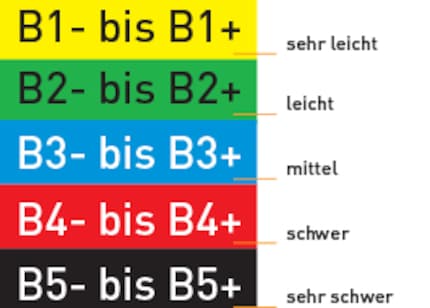
Kevin Huser was a member of the Swiss national team for several years and enjoyed great success at national level. At the age of 18, he reached the peak of his success. In 2013, when he took part in the World Youth Ice Climbing Championships, he beat his opponents to the title of Lead and won a bronze medal in speed (Speed).
Kevin also has the bouldering holds perfectly in hand, which are distinguished by shape: svase, notches, handholds, single finger, double finger, etc. Depending on the shape of the hold, the gripping technique varies. Kevin explains that heavier climbers generally prefer svase holds as they can make better use of their strength on them. Light climbers, on the other hand, prefer holds on which they can actively hang or cling.

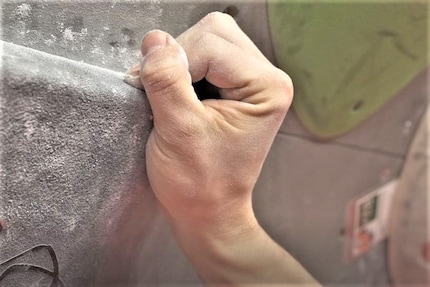
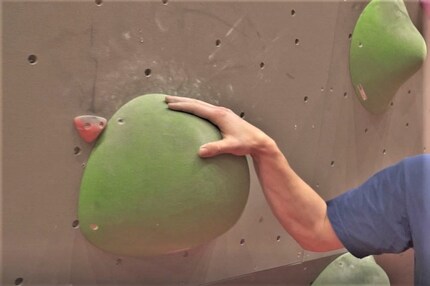
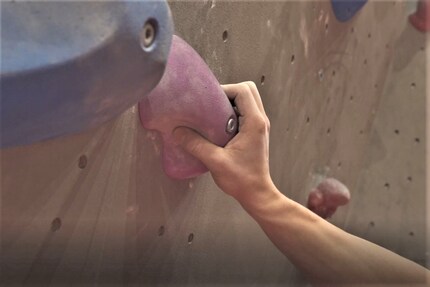
Before starting my personal challenge, I practise a little. Kevin makes me try several beginner blocks, marked 'very easy' and 'easy'. Kevin gives me good advice and I manage almost all of them with one exception: the green B2+. Whatever I do, gravity is stronger than me. Having strength is of no use if you don't apply the right technique. Without it you go nowhere, because in no time you exhaust all your strength and get knocked out. Speaking of strength, don't underestimate the importance of your legs in bouldering: as the old saying goes, 'don't skip leg day'! And don't neglect your upper body muscles either.
After having totally failed with rowing on Lake Zurich, I feel a bit under pressure. I can't fail again! So I'm glad that Kevin is giving me tips on how best to tackle this rock face: put your right foot here, your left hand there and so on. And then, as they say: if you know where you want to go, you're already halfway there. Even if it is quite exhausting to get to the top. But no matter. I passed the test! Thank you, Kevin Huser!!
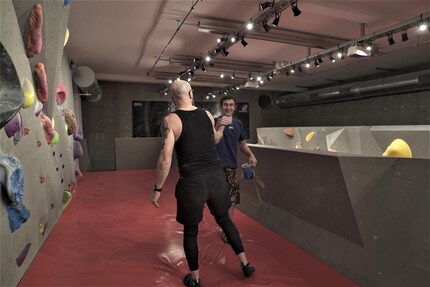
Next time I will go much higher, namely 2 200 metres above sea level. My next challenge will be a freeski descent on Crap Sogn Gion. And of course, I hope I don't break anything. Don't want to miss my next challenges? Follow me here!
From radio journalist to product tester and storyteller, jogger to gravel bike novice and fitness enthusiast with barbells and dumbbells. I'm excited to see where the journey'll take me next.
Interesting facts about products, behind-the-scenes looks at manufacturers and deep-dives on interesting people.
Show all